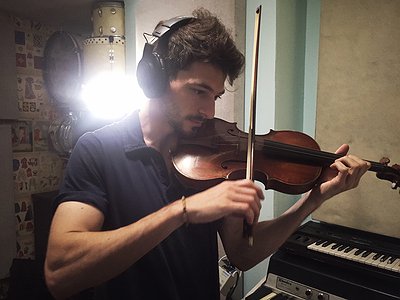Time is a variable only seldom discussed within the context of contemporary composition. Can you tell me a bit about your perspective on time in relation to a composition and what role it plays in your work?
I think I’m hyperaware of duration and that might be because I work in an English department, where concision is a common theme. I am generally interested in stripping away anything that doesn’t feel absolutely essential, not because I think this necessarily leads to musical clarity or that ‘clarity’ is even what is most desirable (it all depends on what you’re trying to achieve musically), but because I simply enjoy the exercise of identifying what it is that sounds essential to my ears and winnowing accordingly. In my own case, this tends to have implications for the length of a piece, but of course, an interest in minimizing needn’t amount to brevity (as many minimalist works demonstrate).
How do you see the relationship between the 'sound' aspects of music and the 'composition' aspects? How do you work with sound and timbre to meet certain production ideas and in which way can certain sounds already take on compositional qualities?
This relationship is the focus of my latest composition project. How to Listen to Machines takes as its starting point the view that the musicality of sound is contingent on listener expectations. I wanted to experiment with those expectations by taking sounds we deliberately tune out in everyday settings and placing them in an environment in which we are anticipating musicality in every sound.
Our sense of hearing shares intriguing connections to other senses. From your experience, what are some of the most inspiring overlaps between different senses - and what do they tell us about the way our senses work? What happens to sound at its outermost borders?
My response to sound seems to affect my entire body, although I don’t have anything like synesthesia. There are certain pieces of music that can produce intense physical responses which I feel like I have very little control over. The sensations are oftentimes in conflict as well. When I listen, for example, to a relentlessly unresolving piece like Giacinto Scelsi’s Anahit, I experience an exhilarating, almost joyous sense of pain, and the adrenaline that accompanies it is a sensation I experience rather often when listening to music in general or sounds that intrigue me.
Art can be a purpose in its own right, but it can also directly feed back into everyday life, take on a social and political role and lead to more engagement. Can you describe your approach to art and being an artist?
I don’t have any overarching approach, per se. I have to think of my work in localized, contextual terms. I’m not particularly attracted to designing musical ideas with grander political agendas, perhaps because I so often use music in my own life as a refuge from ideological worlds; a sanctuary for the senses, so to speak. I admire those who use their art to champion causes, and I have other avenues that satisfy my own desire to engage the political, but there is something in me that wishes to rope off my experience of music from that kind of engagement.
It is remarkable, in a way, that we have arrived in the 21st century with the basic concept of music still intact. Do you have a vision of music, an idea of what music could be beyond its current form?
My understanding of music is already so broad that it can accommodate just about any sound from any source in any setting. I do think that musical forms will increasingly account for the participatory role of the listener. Listening has never been an act of passive reception, but the visibility of their active role will only increase as technology continues to equip listeners to intervene in new ways.


